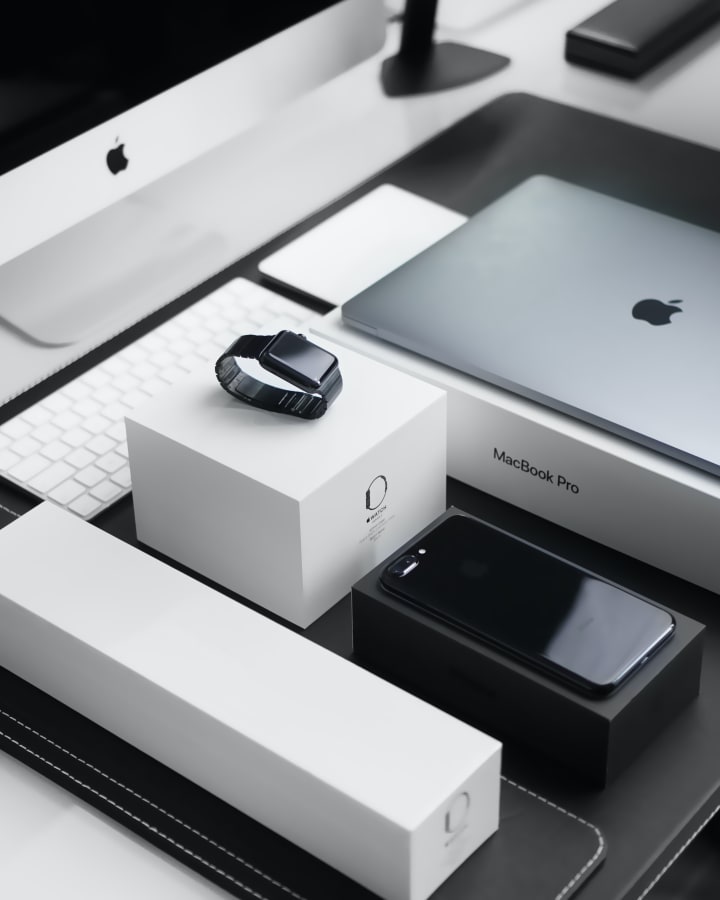From Brainstorming to a Finished Product
Everything you need to know in the entrepreneur's journey from an idea to a finished product

Business ideas pop into our heads at the most random moments. An idea is a fantasy unless you start the proper steps to cultivate and grow that idea into a business. The idea for the multi-billion-dollar company Uber, was discovered when the two creators could not find a cab in a snowstorm. The idea of being able to order a cab from your phone was born. This idea was tested and Ubercab was created.
The brand took many transformations throughout the years, but like any other great idea, it provided incredible value to customers. The idea of ordering a cab or personal driver from a button on your phone was unheard of and quite fictitious. The original founders were able to provide direct value to millions of people. The creation of any great product or service starts with a great idea.
Here is an easy 6-step process from brainstorming your idea to creating and selling a finished product:
Step 1: Brainstorming Business Ideas
Brainstorming involves thinking of as many ideas as you can. I like to call it “word vomit” which means writing as many ideas down as possible. After you have brainstormed, choose the best ideas that provide value. Value can be in the form of saving time, money, or hassle for consumers. After you have chosen which of your ideas provide the best value, determine whether each of these ideas is different, better, or special from what already exists in the market. If your idea already exists, think of how you can make it different or better.
Step 2: Product Concept Testing
The second step after determining a winning idea is to test that idea or concept. We call this product concept testing. Simply test your idea among your target audience and different groups of people, the more feedback the better. In this step, you will need to create a product concept statement.
A product concept statement describes your target audience, the problem, and how your product or service provides value. For example, a product concept statement of a self-propelled lawn mower might be: “The self-propelled lawn mower helps homeowners maintain their lawns. That's because the self-propelled lawn mower provides an effortless pushing experience and a precise clean cut.” Here is a template:
“The _____(Your Product) helps _____(Target Audience) ____(State the Problem). That’s because____(Your Product) _____(Value Statement). "
Step 3: Create a Prototype
Now that you have a value-driving idea and a good product concept statement, it's time to create a prototype. Just as with your concept testing, make sure to test your prototype among as many people as you can, especially your target audience. In-depth testing of your prototype can save you hundreds of dollars down the road. Your prototype helps to give you insight into how much the finished product may cost.
Step 4: Determine The Manufacturing Process
The next step in the process is to find a manufacturer. Many different manufacturing processes exist. The most common is injection molding, which can be used for high volume production. Injection molding involves molding your prototype into dense steel. The plastic is then injected into the steel casing and cooled to form the finished product. Injection molding companies can be found in almost any area. For example, try searching for injection molding Utah, and many results will appear.
Molds can also be made through 3-D printing but these molds are not as durable as steel molds. Blow molding is mainly used for plastic bottles or plastic products shaped similarly. Vacuum casting is a great method of replicating prototype copies quickly. Find a manufacturer that uses the process you need then compare pricing among others.
Step 5: Design the Packaging
The next step in the process is to design your packaging. The most important idea to keep in mind is providing an experience with your packaging. The best example of this is Apple. Their packaging for almost every product is the same. Apple does an exceptional job of creating innovative and sharp packaging that helps to reinforce their traits of quality and luxury. Similar to manufacturing, there are many packaging companies to choose from.

Step 6: Sell, Sell, Sell
The last and final step in the process is to determine how you will sell your product. This may be the most important step. Decide which channels will provide the most sales. These different channels include social media, website, wholesale, retail, and others. What will be your marketing strategy?
There are four parts to determining your marketing strategy: product, place, price, and promotion. What features do you want to highlight in your product? Where will you sell your product? What will be the price of your product? How will you promote your product? Answering these questions will create a specific marketing strategy.
Now that you have an idea, product, packaging, and marketing strategy, you are ready to sell. If you hit bumps along the way, go back to previous steps and determine how you can improve. If you have any feedback, feel free to leave it in the comments below!






Comments
There are no comments for this story
Be the first to respond and start the conversation.